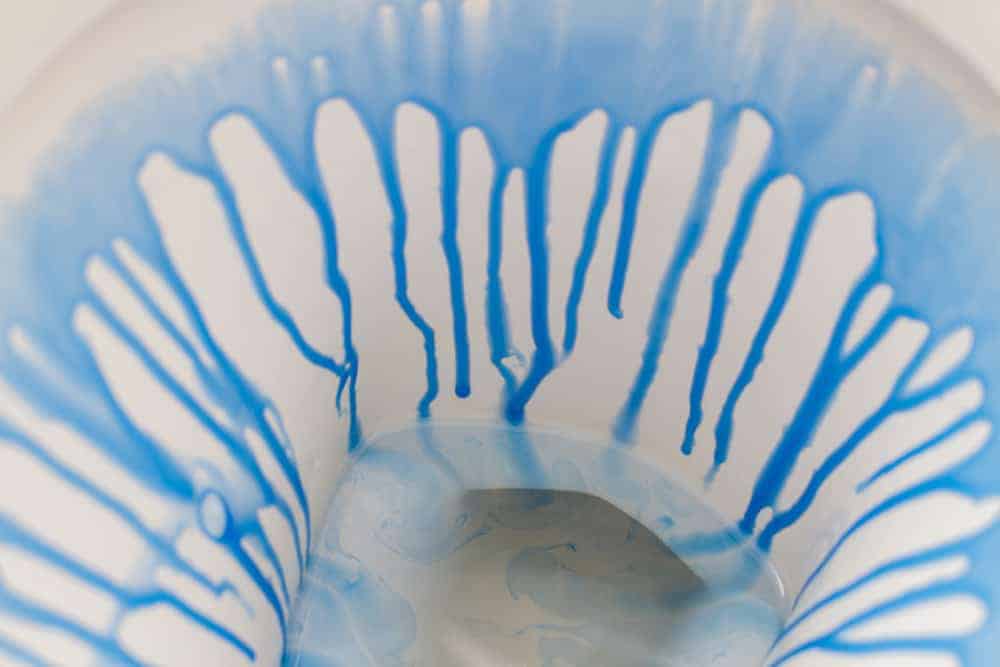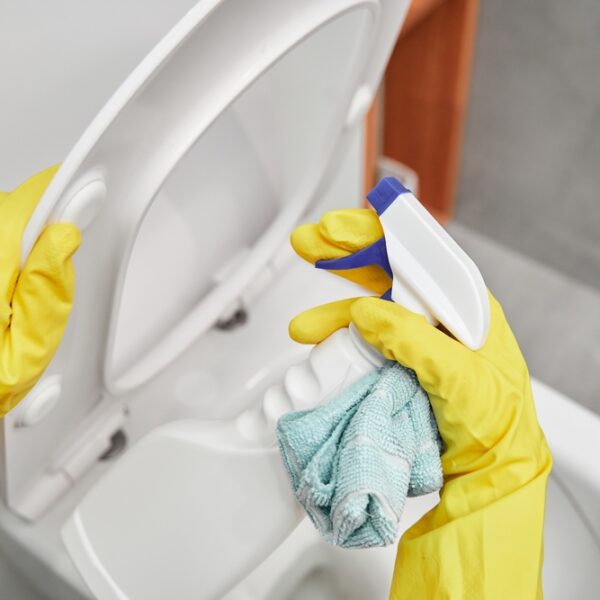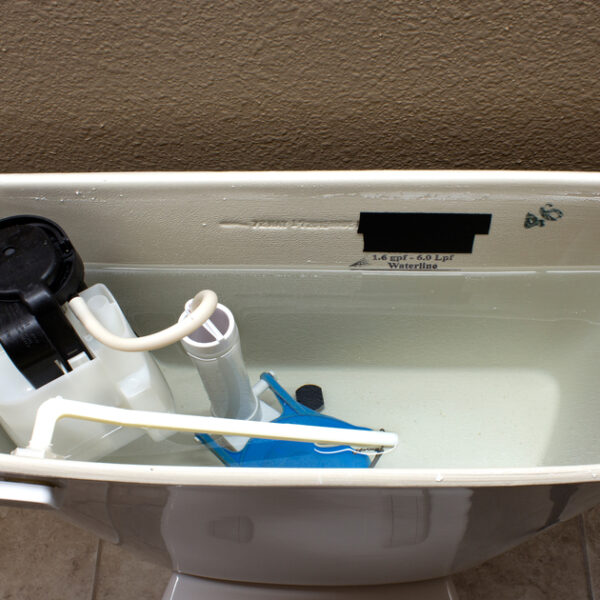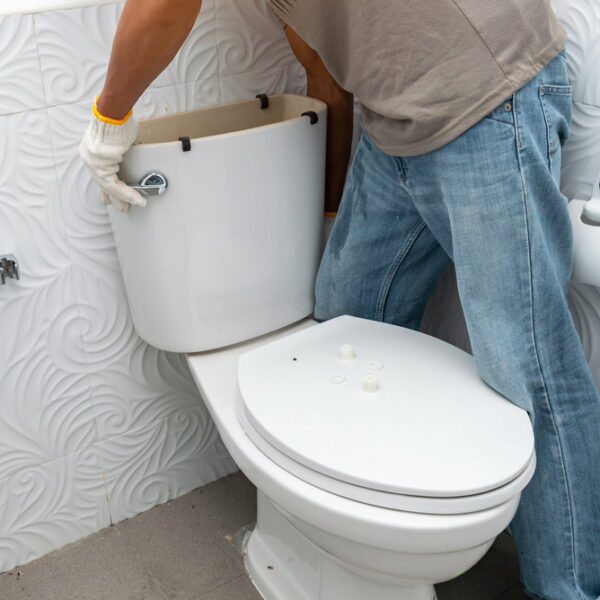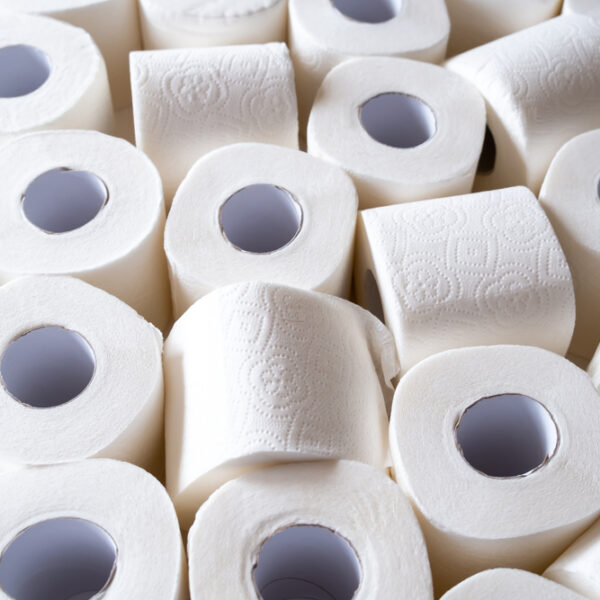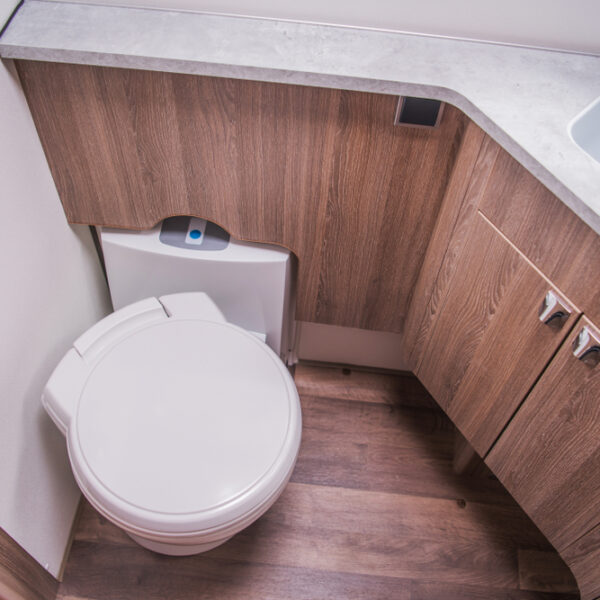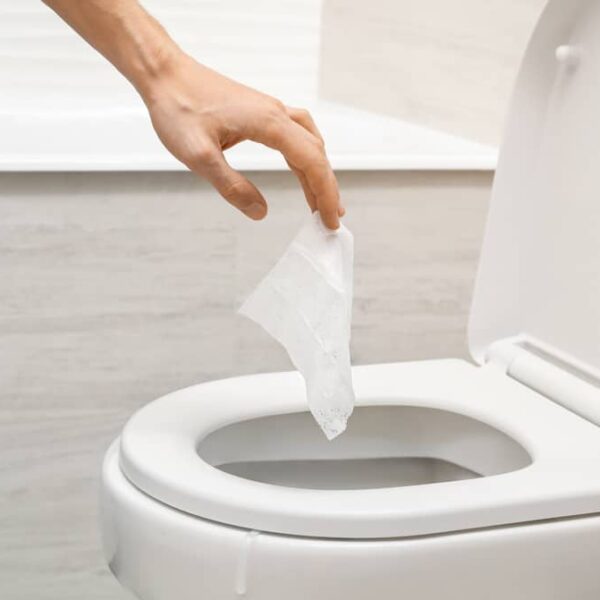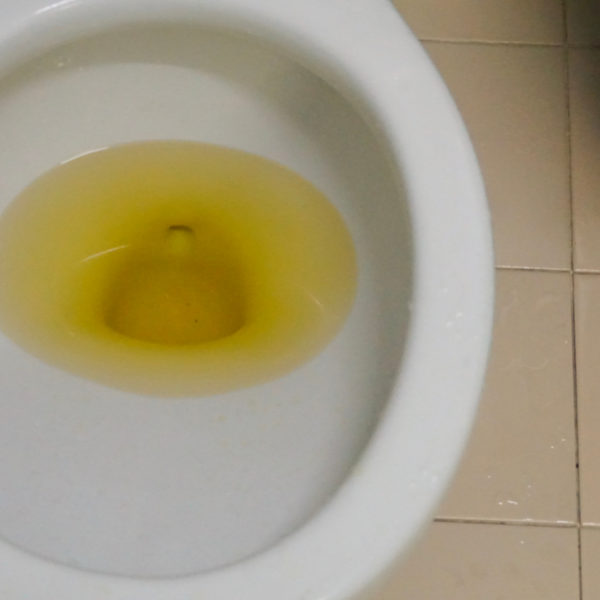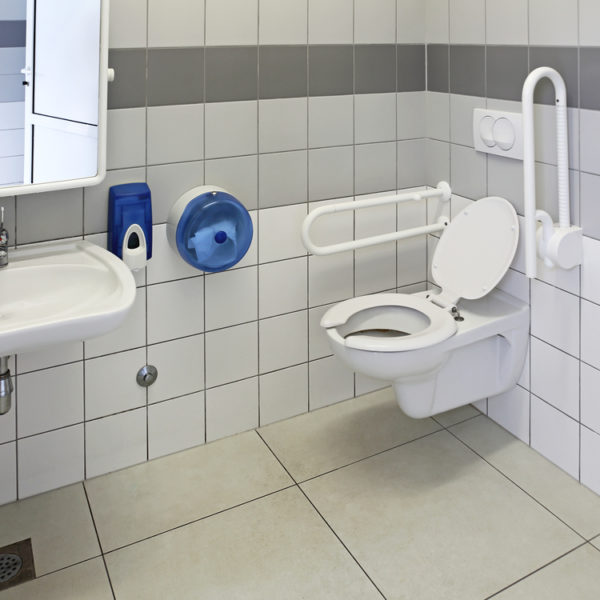Cleaning a toilet is an unpleasant job that nobody enjoys, but it’s something most of us need to do. Yet, however hard we try, it can often be difficult preventing unpleasant, unsightly stains from developing.
Sometimes those stains can be blue, green or blue-green, and when this happens, you’re probably wondering where they came from – and more importantly, how to get rid of them.
If this all sounds familiar, then we’ve got you covered – because, in this post, we explain everything you need to know about how to remove blue-green stains from a toilet bowl.
What causes blue-green stains in toilet Bowl
Before we start talking about getting rid of unsightly blue-green stains, it’s worth taking a moment to think about what causes them.
In fact, most stains in toilet bowls can be removed using similar methods, so often, it doesn’t matter what caused them – but at least if we know what causes certain stains, we can take steps to prevent them from returning once we have cleaned them off.
Furthermore, blue-green stains are a particular concern since they may be due to an issue with your water.
This is because stains of this color are usually due to increased levels of copper in the water, either directly from the water supply or, more likely, due to corroding pipes in your plumbing system.
If your water has elevated copper levels, you need to establish why because it could mean your pipes are deteriorating and may eventually burst – and even worse, it could mean that your drinking water is affected.
Can these stains be due to anything else?
Having said that stains of this color are usually due to copper in the water, there are some other possibilities too.
Sometimes, mineral deposits of lime, calcium, magnesium and more can cause similar stains. When rainwater passes through rocks on the way to our water supply, in many areas, it passes through porous rocks and picks up minerals.
The result is hard water, and these minerals can then be deposited in toilet bowls, showers, sinks, bathtubs and anywhere else there is running water in your bathroom.
However, the colors are usually a little different from blue stains that are due to copper.
Stains from hard water tend to be brown or greenish-brown – stains from limescale don’t usually have the blue color of copper stains.
Also, bacteria can cause similar stains. However, while these stains can be greenish-brown, they also tend not to have the blueish hue of a copper deposit. They also tend to have a slimy appearance and feel, which copper deposits lack.
Another possibility is rust stains, but these stains will usually be a “rusty” orange color rather than a blue-green copper-related stain.
What can you use to remove blue-green stains?
So now we know how these stains form, let’s have a look at what you can use to get rid of them.
Of course, you can use regular toilet-cleaning detergents that you buy from a store, but there are other possibilities you can try if you want to save money, don’t want to use harsh chemicals or simply don’t have any specialist toilet detergent to hand.
1. Vinegar
Most people know that vinegar is among the most effective cleaning agents out there – and most people have a bottle of cleaning-grade vinegar in their home.
Vinegar’s efficacy in cleaning is due to the fact that it contains acetic acid, which helps break down and remove all kinds of stains – including blue-green stains in toilet bowls.
If you don’t have any white vinegar in your home, you can also use food-grade vinegar made from things like wine or cider.
The main downside of vinegar is its pungent odor, but this soon dissipates after use.
2. Lemon juice
Due to its citric acid content, lemon juice has similar cleaning properties to vinegar and can be used in much the same way.
The main advantage it has over vinegar is that it has a naturally pleasant smell. This can be enhanced further by mixing it with essential oil like tea tree oil before use.
However, on the downside, using fresh lemon juice will work out more expensive than using vinegar, and some people might think it’s a waste to use lemons for cleaning instead of in food or drinks.
3. Bicarbonate of soda
Like vinegar, bicarbonate of soda, also known as baking soda, is another common, effective and inexpensive cleaning agent that most people have at home.
You should use cleaning-grade bicarbonate of soda rather than food-grade baking soda, though, since it’s a lot cheaper.
4. Salt
Table salt is not usually thought of as a toilet bowl cleaner, but for blue-green copper stains, it can be mixed with vinegar to deal with the most stubborn toilet bowl stains – which we’ll cover in more detail in a moment.
5. Coca-Cola
Most home DIYers or those who watch DIY cleaning YouTube channels are sure to be aware of the powerful cleaning properties of Coke that are due to its acid content as well as the carbonation that causes it to fizz.
Coke can be used to clean a whole range of household appliances and is also useful for unblocking sinks or toilets. If you don’t want to use genuine Coca-Cola, generic cola brands will usually work just as well.
6. Borax
Borax is a powder that works in a similar way to baking soda. However, it’s a more potent product, so you’ll have to pick it up at a hardware store since most supermarkets don’t sell it.
7. Bleach
Chlorine bleach or sodium peroxide can be used to clean many stains from toilets, including blue-green ones. However, bleaches are harsh chemicals that aren’t good for the environment.
This means many people prefer to avoid them or turn to them only as a last resort.
Some suggested methods for removing blue-green stains
If you see blue-green stains developing in your toilet bowl, here are a few suggestions for how to clean them off using some of the products we’ve just mentioned above.
How to Remove Blue-Green Stains from a Toilet Bowl with Vinegar
What you’ll need:
- White vinegar
- Spray dispenser
- Toilet brush
Step 1. Put the vinegar into the spray dispenser
The first thing to do is to pour a cup of white cleaning vinegar into a spray dispenser.
Step 2. Spray vinegar onto the stain and leave it to act
Use the spray bottle to apply the vinegar generously to the area that’s affected by the stain. Leave the vinegar to act for at least half an hour – or longer if possible.
Step 3. Scrub with the toilet brush
Take your toilet brush and give the stain a good scrub. You should find that the stain now comes off relatively easily.
Step 4. Flush the toilet and inspect
Flush the toilet a couple of times to rinse away the vinegar and dirty water and inspect the stain. It should have disappeared completely, but if not, you can simply repeat the same steps once or twice more until it works.
How to Remove Blue-Green Stains from a Toilet Bowl with bicarbonate of soda
What you’ll need:
- Bicarbonate of soda
- Cup for mixing
- Spatula or old spoon
- Toilet brush
Step 1. Mix up a paste of bicarbonate of soda and water
Start by combining some bicarbonate of soda and water in a cup to make a paste. The ratio should be 2:1 bicarbonate of soda to water.
Step 2. Apply the paste to the stained area and leave
Using a spatula or an old spoon, apply the paste to the stained area in the toilet bowl and leave to act. You should leave it for a minimum of 30 minutes.
Step 3. Scrub with the toilet brush
Use the toilet brush to scrub the stain. It should now come off quite easily.
Step 4. Flush and check
Flush the toilet to wash away the paste and the dirty water. Inspect the stain to see if you have achieved the desired effect – and if not, try repeating the same steps another couple of times.
Other ideas for cleaning toilet stains
Methods 1 and 2 above describe the basic steps you should follow to clean blue-green stains from your toilet bowl. However, there are some variations you can also try with the other cleaning agents we mentioned.
For example, if you prefer to use a couple of cups of lemon juice and essential oil, simply substitute this for the vinegar in Method 1 and proceed in the same manner.
Another suggestion is to follow the same steps as in Method 1 with vinegar, but then sprinkle a couple of cups of salt over the vinegar and the stain before leaving it to take effect. You should find this is even more effective than using vinegar alone.
Alternatively, with bicarbonate of soda, use vinegar instead of water (in the same ratios) to make an even more powerful paste. You can also use borax with water or vinegar in the same way.
If you want to try using Coca-Cola, it’s probably more useful for stains on the bottom of the bowl than around the sides. You can try it by emptying the bowl, pouring in the Coke, leaving it to work for half an hour or so and then scrubbing.
See below for tips about how to empty a toilet bowl if you’re not sure how to do it.
Finally, you can try using bleach by pouring it onto the stain and then scrubbing it with a brush. Be sure to wear gloves and even eye protection if you do since bleach can cause damage to the skin and especially the eyes.
Tips for removing and preventing blue-green stains
Here are a few more tips that will help you achieve the best results – and ensure that stains don’t come back once you’ve successfully cleaned them.
1. Remove water from the toilet bowl first
If the stains are close to the water line, you’ll need to remove the water from the bowl first – and you may find it’s easier to clean other stains from your toilet if remove the water first anyway.
To do this, all you need is an old cup or ladle and an old towel.
Start by scooping up as much water as you can from the bowl with the cup or ladle – and then just mop up the remainder with the towel when there’s only a little left in the bottom.
2. Get pipes checked by a plumber
If you have blue-green stains in your toilet bowl, you should consider calling out a plumber to have your plumbing system checked.
If the pipes are damaged, they may be corroding, and if they burst, it can cause lots of expensive damage. In addition, if the copper is also getting into the drinking water supply, it may be affecting the water you use for drinking and cooking.
So by all means, deal with the stain in the toilet bowl – but with blue-green stains, you shouldn’t neglect the root cause.
3. Check inside the toilet tank
If the stains seem particularly persistent and you can’t find any other reason why they keep recurring, you should open up your toilet cistern and check if anything is broken or corroding inside.
Sometimes the source of the stains can be found inside the tank, which makes it easier to deal with. Empty the tank and clean with vinegar or one of the other cleaning agents we mentioned above, and the problem should disappear.
4. Keep up regular toilet cleaning and maintenance
There’s no substitute for regular cleaning and maintenance of your toilet. If you make sure it is flushed after each used and then cleaned properly at least once a week, this will prevent all kinds of stains from appearing, saving you work dealing with them later.
5. Don’t use abrasive brushes on your toilet
However stubborn the stains in your toilet are, try to resist the temptation to attack them with a stiff brush or anything else abrasive.
This is because abrasive brushes can damage the porcelain of your toilet bowl and the plastic of your toilet seat, so while it may remove the initial stain, it will make it easier for stains to develop in the future.
Try to persist with the methods we’ve detailed above, and with a little effort, you should be able to remove even the most difficult stains.
The same goes for pumice stones. You may see online that some sites advise using a pumice stone to clean stains from your toilet, but this should be avoided for the same reason. Pumice stones are abrasive and will permanently damage the material of your toilet bowl.
Plenty of ways to deal with stubborn blue-green stains
As we have seen, blue-green stains, usually caused by excess copper in your water supply, can be unsightly and tough to remove.
However, if you know the right methods to use, they aren’t as bad as they might first seem – and with some of the techniques we’ve explained in this post, you can look forward to a fresh, clean toilet in no time.
